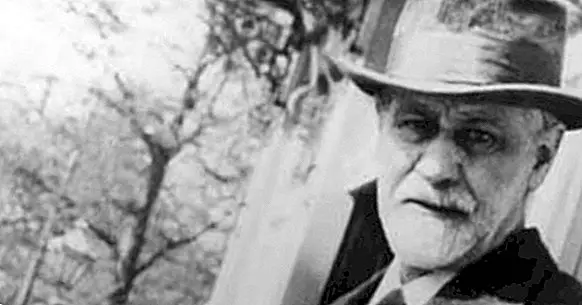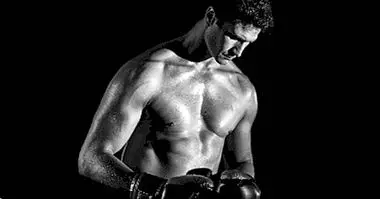The 5 stages of the psychosexual development of Sigmund Freud
The current psychoanalysis initiated by Sigmund Freud more than 100 years ago in one of the main influences of contemporary Western culture.
If his theories about the functioning of the unconscious have served as an influence in many areas of the humanities and art, it is no less true that a good part of his approaches have to do with human sexuality. The theory of psychosexual development with its different stages is the embodiment of this idea , and that is why historically it has received a lot of attention.
Sexuality according to Freud

For Freud, human sexuality is one of the main aspects of the vital energy that moves the behavior of the human being . This energy, which was called libido, is the source of the impulses that for the father of psychoanalysis make us tend toward certain short-term goals and, at the same time, force other instances of our psyche to repress these tendencies so as not to put us in danger or not to come into conflict with the environment in which we live.
The vital energy that is expressed through sexuality, according to Freud, is present from the first weeks of our life, which means that our sexual aspect is not born in adolescence, as many researchers of their time maintained.
But the repercussions of this have nothing to do with simply locating the beginning of our sexual development at one point or another in our vital calendar. It has profound implications for the way in which Freud related our personality with our intimate side , affective and impulse based.
The development of the unconscious
One of the essential ideas behind Freud's theory of psychosexual development is that the way in which he manages the satisfaction of libido during childhood leaves traces in our unconscious that will be noticed during adult life.
Thus, if the factors external to a child make it unable to satisfy these tendencies as desired (for example, because of the reprimands of their parents), this anguish is translated into a fixation that has to do with ideas related to a specific erogenous zone (which does not have to be in the genital area). For Freud, therefore, both the biology and the upbringing intervene in psychosexual development.
Other followers of the psychodynamic current ended up rejecting Freud's deterministic vision, according to which the unconscious part of ourselves constantly manipulates us without that we can do too much about it. However, this way of thinking caused Freud to create the theory of psychosexual development, one of the most remembered in the history of psychology.
The stages of development and their fixations
From the different ways in which the stage of growth of the minors conditions the appearance of one or the other type of fixation, Sigmund Freud formulated the theory that would unite sexuality with the development of the Freudian unconscious .
In it, it is proposed that in the first years of our lives we go through different stages of development linked to sexuality and different fixations, and that what happens during them will influence the way in which the unconscious conditions the person once they have arrived to adulthood. That is to say, that each of the stages of psychosexual development would mark the tempos that define what kind of actions are necessary for express the libido in a satisfactory manner and which can create conflicts that remain unconsciously embedded in us.
The instinctual phases of psychosexual development
According to Freudian theory, stages of psychosexual development and its characteristics are the following .
1. Oral stage
The oral stage occupies approximately the first 18 months of life , and in it appear the first attempts to satisfy the demands promoted by the libido. In it, the mouth is the main area in which pleasure is sought. The mouth is also one of the main areas of the body when it comes to exploring the environment and its elements, and this would explain the propensity of the little ones to try to "bite" everything.
If babies are emphatically prevented from using their mouth to satisfy themselves, this could produce a blockage that would cause certain problems to be fixed in the unconscious (always according to Freud).
2. Anal stage
This stage would occur from the end of the oral stage and up to 3 years of age . It is discussed the phase in which they begin to control the sphincter in defecation. For Freud, this activity is linked to pleasure and sexuality.
The fixations related to this phase of psychosexual development have to do with accumulation and expenditure, linked to the saving spirit and discipline in the first case, and to the disorganization and waste of resources in the second.
3. Phallic stage
This drive phase would last between 3 and 6 years , and its associated erogenous zone is that of the genitals. In this way, the main pleasurable sensation would be to urinate, but at this stage the curiosity about the differences between men and women, boys and girls, starting with the obvious dissimilarities in the form of the genitals and ending would also originate in this phase. in interests, ways of being and dressing, etc.
In addition, Freud related this phase to the appearance of the "Oedipus complex", in which male children are attracted to the person who exercises the role of mother and feel jealousy and fear towards the person who exercises the role of father. As for the girls who go through this stage of psychosexual development, Freud "adapted the idea slightly with the Oedipus Complex to encompass these, even though the concept had been developed so that it acquired meaning mainly in males. when Carl Jung proposed the Electra complex as a female counterpart to Oedipus.
4. Latency stage
This phase starts around 7 years old and extends to the beginning of puberty . The latency stage is characterized by not having a specific erogenous zone associated and, in general, by representing a freezing of sexuality experimentation by children, in part because of all the punishments and warnings received. That is why Freud described this phase as one in which sexuality is more camouflaged than in previous ones.
The stage of latency has been associated with the appearance of modesty and shame related to sexuality.
5. Genital stage
The genital stage appears with puberty and is prolonged onwards . It is related to the physical changes that accompany adolescence. In addition, in this phase of psychosexual development the desire related to the sexual becomes so intense that it can not be repressed with the same efficacy as in previous stages.
The erogenous zone related to this vital moment is again that of the genitals, but unlike what happens in the phallic phase, the competencies necessary to express sexuality through union bonds of a more abstract nature have already been developed. and symbolic that have to do with consensus and attachment with other people. It is the birth of adult sexuality , in contrast to another linked only to simple instant gratifications and obtained through stereotypical activities.
Freudian theory, in context
The theory of psychosexual development can lead to a certain alarmism if one thinks that poor management of the education of minors during these phases can leave them with traumas and all kinds of disorders if they do not understand Freud's ideas well. However, we must bear in mind that this theory during was formulated and developed at a point where psychology had just been born .
When Sigmund Freud developed his theories, it was based on specific cases of patients he knew, that is, that his way of investigating was based on a mixture of case studies and interpretation of the symbolic contents of the behavior of people. He barely established hypotheses that could be contrasted with reality, and when he did, he limited himself to observing, not to performing experiments. The theory of psychosexual development was no exception to this norm.
Nor does it make much sense to investigate the usefulness of psychosexual development theory by using statistical analyzes, because the formulation of these ideas it was based on the interpretation what was done about the acts of the patients and their past.
Partly because of this and partly because Freudian psychoanalysis does not stick to the epistemology used in current science, there is no reason to think that this theory serves to explain and predict the problems linked to sexuality and the socialization of people. This means that psychosexual theory can not be used to detect warning signs about whether children or adolescents develop correctly or not, and can not be used to ensure that mental disorders are due to this type of mechanism.



















